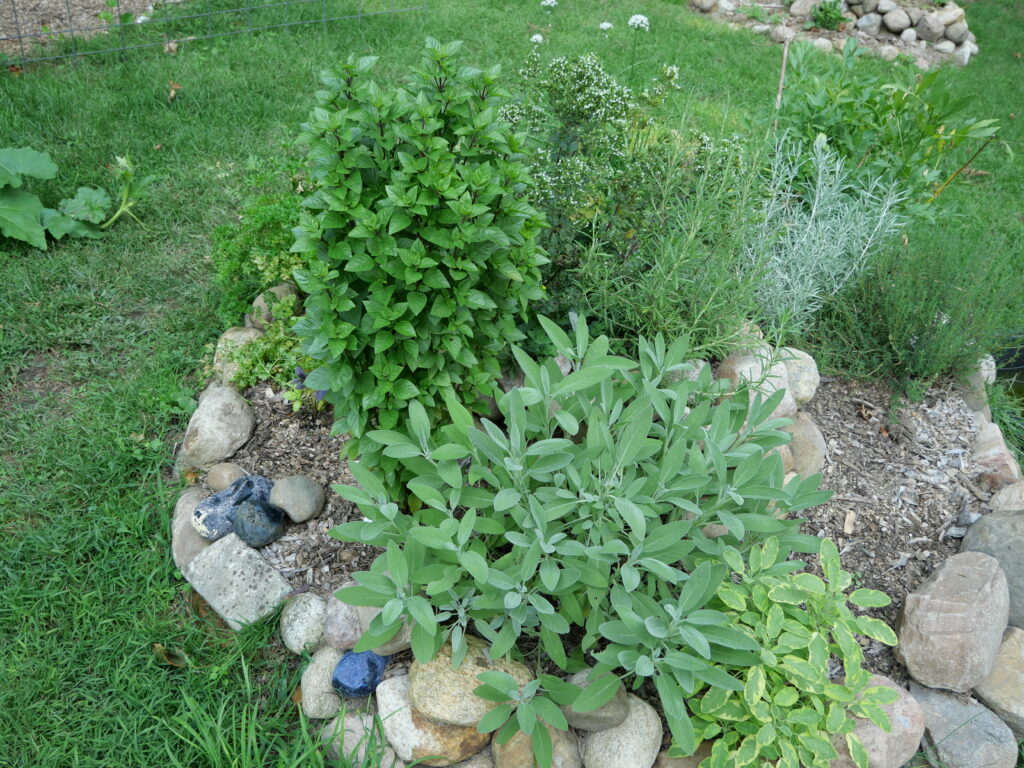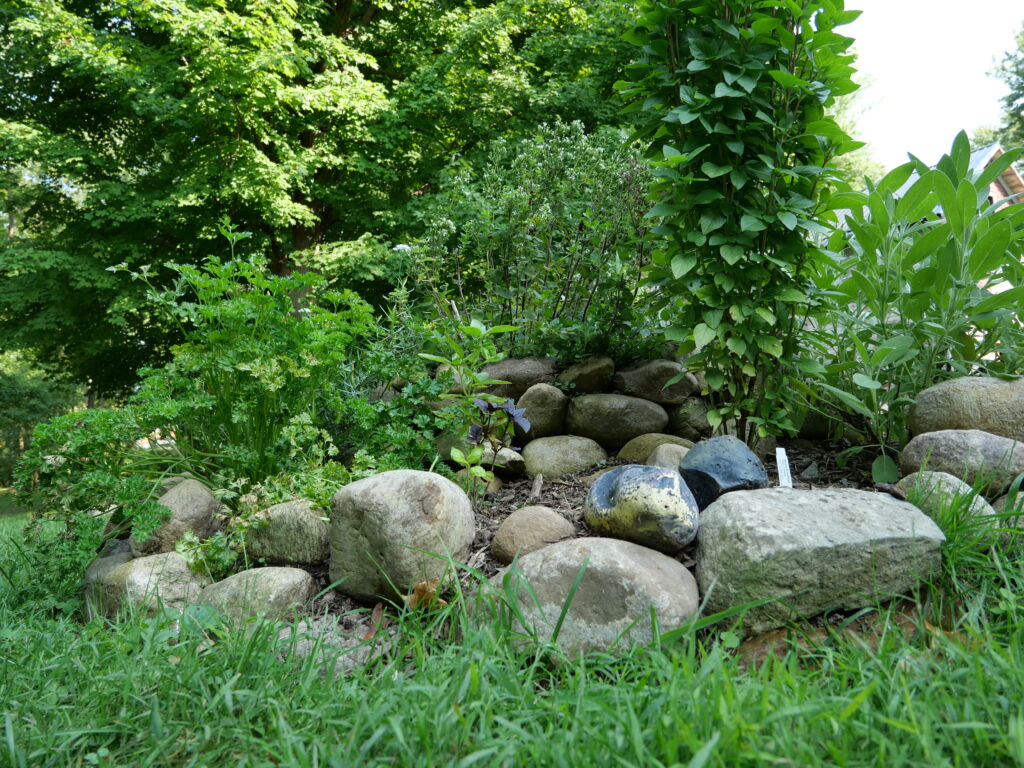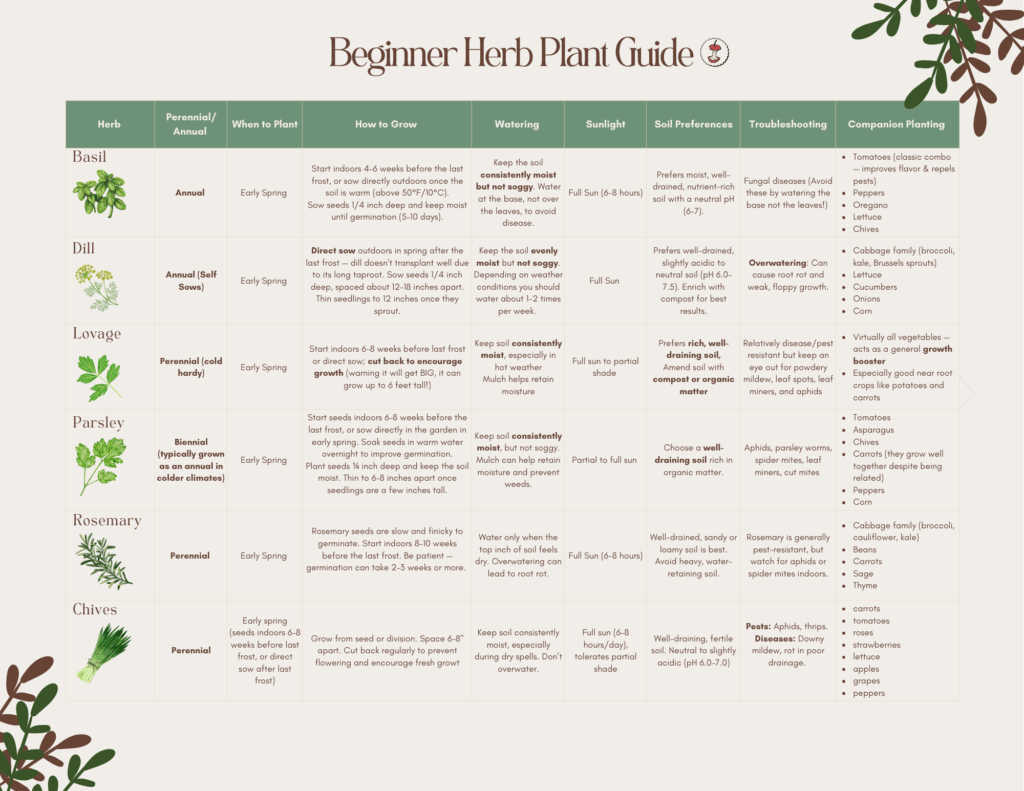About an Herb
What are herbs, and why should you plant them?
Herbs are incredibly versatile, which is why they can be defined in many different ways. A botanist might consider an herb to be any seed-bearing plant that isn’t “woody,” while a gardener might focus on an herb’s many practical uses. Fortunately, Merriam-Webster recognizes both perspectives, defining herbs as “a plant or plant part valued for its medicinal, savory, or aromatic qualities.”
In my opinion, herbs are the epitome of hustle culture—the good kind. They multitask better than I ever could! Herbs can be used in home remedies, added to recipes to enhance both flavor and health benefits, and grown just about anywhere: indoors, outdoors, or even as part of your landscaping to add visual interest. Plant them next to your vegetable garden, and folklore says they’ll help your veggies grow better. Science backs them up too—some herbs can naturally deter pests.
The short answer? Herbs are easy to plant, care for, and grow, and they offer tons of benefits for very little effort.
A Note on Annuals vs. Perennials
Before we get into the basics of caring for your herbs, we should touch on one key factor—annuals vs. perennials.
I’m a little embarrassed to admit this, but when I first started gardening, this concept totally confused me. I didn’t understand the idea of a self-sowing annual—to me, if it came back, didn’t that just make it a perennial? Turns out… I was wrong.
So let’s break it down:
An annual is a plant that flowers and dies within one season. A perennial, on the other hand, will come back for multiple seasons. But just to make things more interesting, depending on the zone you live in, some annuals can actually behave like perennials—if your area doesn’t get a hard frost, they might just keep on growing. And some annuals, if you let them flower and go to seed, can self-sow and pop back up the following season like magic.
Then there are biennials—plants that take two full seasons to complete their life cycle. In the first season, they often won’t flower at all, which can be a little disappointing if you don’t know what to expect.
Okay, now that we’ve cleared that up, let’s talk about general care!
General Care
Soil Breakdowns (pH)
Herbs thrive in soil with a neutral to slightly acidic pH (6.0–7.0).
pH is a scale from 0 to 14 that measures how acidic or alkaline your soil is — 7 is neutral, lower is more acidic, higher is more alkaline. It’s important to know your soils pH because it affects how easily plants can absorb nutrients.
If you are interested in testing your soil you can use an inexpensive pH test kit or soil meter, available at garden centers or online. If you find that your soil is slightly too acidic you can add a little lime, if it’s too alkaline you can amend the soil with compost.
Sunlight
Most herbs need full sun — at least 6 hours of direct sunlight daily. It’s important to know what spots in your garden are best for planting so you can make sure plants that need full sun are in the right spot. I have made the mistake of planting flowers where I wanted them instead of where they would be the happiest many times.
Best garden direction:
- In the Northern Hemisphere, plant your herbs on a south-facing spot to get the most consistent sunlight throughout the day.
- East-facing spots are good for morning sun, which is gentler for herbs that prefer partial shade.
Amending Soil
Healthy soil = happy herbs! Start with well-draining, loose soil and enrich it with compost, aged manure, or organic matter.
Container herbs? Use a high-quality potting mix, not garden soil, and consider adding perlite or coconut coir for lightness.
Regularly amending your soil ensures your herbs have the nutrients and structure they need to grow strong.
Heavy/clay soil? Mix in sand, compost, or perlite to improve drainage.
Top 5 Herbs to Start with and How to Care for them
Below is a brief breakdown of each herb, along with a few ways we love to use them in our own garden cooking. Be sure to check out the printable chart at the bottom for a more detailed description of how to care for your new herb garden! Most importantly: Remember that these herbs are easy, don’t be intimidated by the amount of information we’re giving you. You can plant these herbs outside or in pots and as long as you don’t forget they exist–chances are they will be ok. Good luck!



🌿 Basil
A sun-loving annual that thrives in warm weather. Start it indoors early or plant directly outside once it’s warm. Keep the soil moist but not soggy and harvest often to keep it leafy and flavorful. We love to use basil in salad, marinades for grilled chicken and on fresh made pizza. Check out the core kitchen for more ways you can use this delicious herb in your own cooking!
🌿 Dill
An easygoing annual that prefers direct sowing in early spring. Loves full sun and light, well-drained soil. Keep it evenly watered and thin it out once sprouted. Great in the garden but not a fan of being transplanted. Dill pickles are our kryptonite. This past year we experimented with our first pickles, dilly beans and more. Dill is a must have for pickling and is also a fabulous addition to any salad.
🌿 Lovage
A tall, cold-hardy perennial that grows big and bold! Start it early indoors and give it space. It loves rich, moist soil and a mix of sun and shade. Acts like a super booster for nearby veggies! Lovage was a surprise for us. We bought this herb on a whim because it smelled so similar to celery, and we love to try new things. This herb has been incredibly versatile. We’ve thrown it in salads, marinades, soups and more. Plus, it’s a hardy perennial and requires very little effort.
🌿 Parsley
A biennial usually grown as an annual in cooler spots. Start indoors or sow directly outside in early spring. Likes moist, well-drained soil and some shade. Harvest outer leaves first and it’ll keep coming back! Every kitchen needs parsley, if you are making your own Italian seasoning it is a must have! It is also a fairly mild herb and can easily be paired with any of the others on the list to add a fresh kick to a salad, your marinade or as a garnish for curry or soup.
🌿 Chives
A reliable perennial that’s easy to grow from seed or division. Snip it often to keep it fresh. Loves sun but can handle a bit of shade, and it’s great at keeping pests away from nearby plants. Chives are one of Josh’s favorites. He takes the flowers once the chives have bolted and adds them as a garnish to appetizers. They have a surprisingly sweet flavor that is reminiscent of garlic– while the shoots are perfect as a garnish on salad or a baked potato.
🌿 Rosemary
A slow starter but worth the wait. This fragrant perennial likes dry, well-drained soil and lots of sun. Be careful not to overwater — it’s tough once established and smells amazing in the garden or kitchen. Rosemary is a staple in our kitchen. I love to use rosemary as a seasoning for any protein– Rosemary & Lemon grilled chicken for example!

